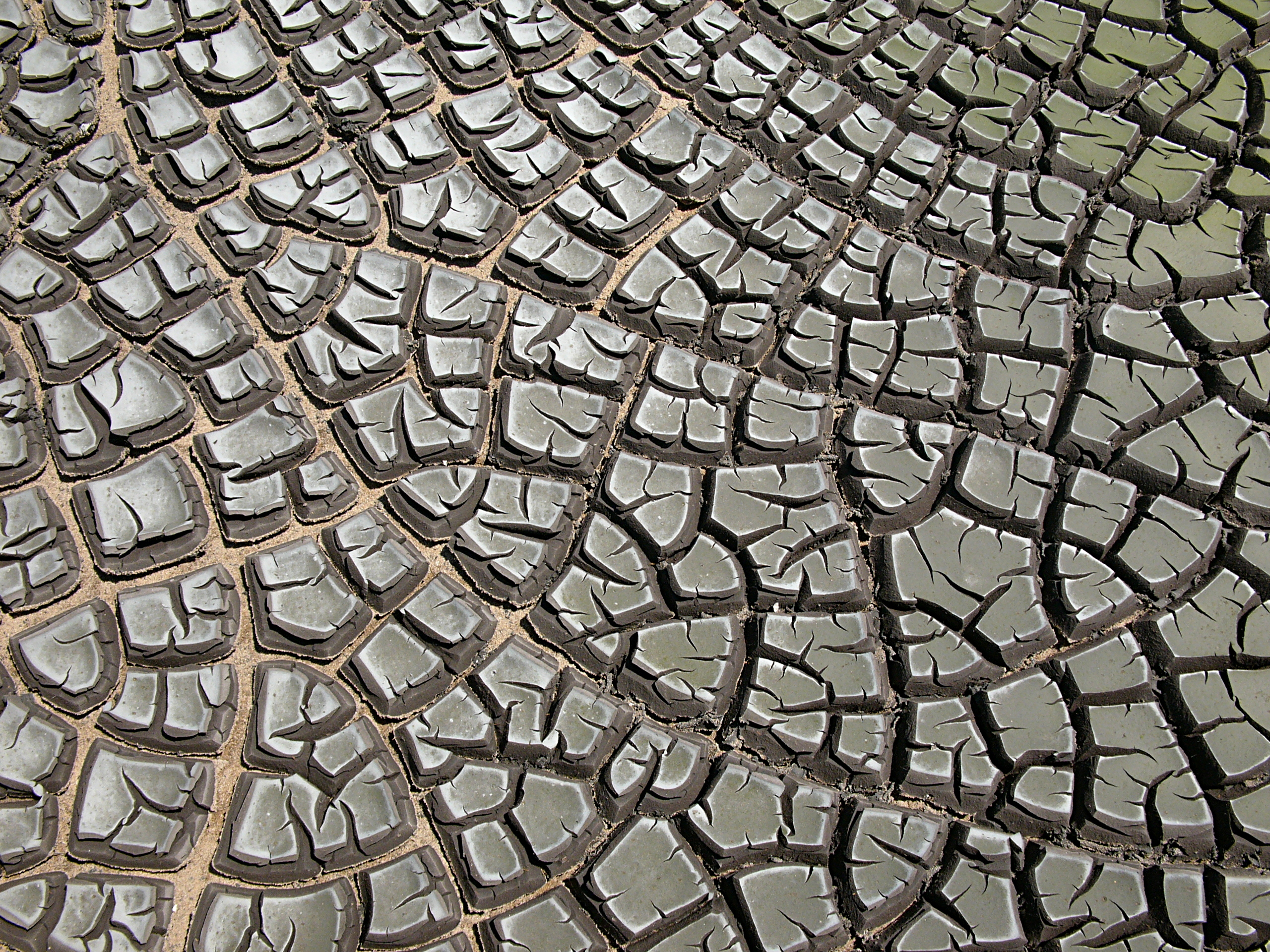.jpg) |
| Hexagonal paper wasp honeycomb by coniferconifer |
The pentagonal shape of a sweet potato flower:
The variably-sided segments of desiccation cracks:
Our observable universe seems characterized by a curious preponderance of geometric forms.
Seventeenth century astronomer and mathematician Johannes Kepler wrote of the harmony and congruence in geometrical forms and physical phenomena in The Harmony of the World (Harmonice Mundi).
Alexander argues that life is not merely in space, but of it. He proposes that the nature of space accounts for the occurrence of life.
REFERENCES
 |
| Polygonal desiccation cracks in sewage plant sludge by Hannes Grobe |
Our observable universe seems characterized by a curious preponderance of geometric forms.
Seventeenth century astronomer and mathematician Johannes Kepler wrote of the harmony and congruence in geometrical forms and physical phenomena in The Harmony of the World (Harmonice Mundi).
 |
| Archimedean polyhedra used by Kepler in Harmonice Mundi |
In The Nature of Order twentieth century architect and design theorist Christopher Alexander writes of the relationship between life and space.
To me it seems that diversity in things is created from nowhere other than matter, or from occasions caused by matter, and where there is matter there is geometry.
— Johannes Kepler, 1601
Alexander argues that life is not merely in space, but of it. He proposes that the nature of space accounts for the occurrence of life.
I believe that all centers that appear in space - whether they originate in biology, in physical forces, in pure geometry, in color - are alike simply in that they all animate space. It is this animated space that has its functional effect upon the world, that determines the way things work, that governs the presence of harmony and life.
— Christopher Alexander
REFERENCES
- Architect starts with idea that space makes life possible, Kenneth Baker, Chronicle Art Critic, 2 February 2006.
- Concerning the More Certain Fundamentals of Astrology, Johannes Kepler, 1601.
- The Harmony of the World (Harmonices Mundi), Johannes Kepler, 1619.
- The Nature of Order, Christopher Alexander, Center for Environmental Structure, Berkeley, California, 2003-2004.
.jpg)









